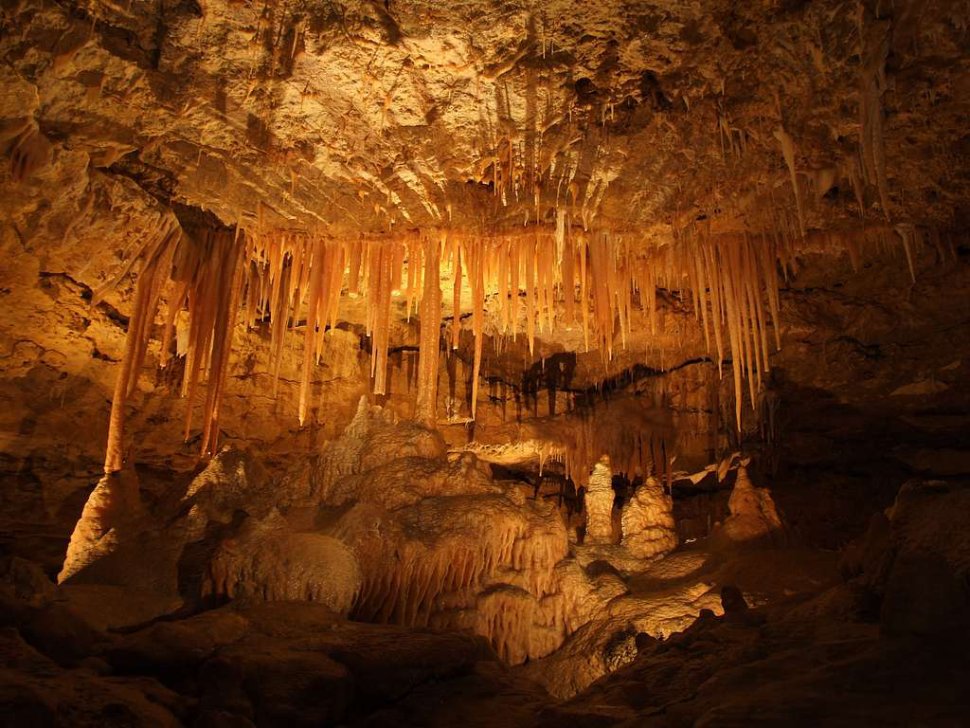Limestone caverns are one of nature’s most fascinating creations, hidden beneath the Earth’s surface, waiting to be discovered. These caverns are formed through a slow and patient process, where water and rock interact over thousands, even millions, of years. But how exactly are limestone caverns formed, and what makes them so special?
When visiting a limestone cavern, many people are in awe, but they don’t comprehend the processes that created these magnificent underground landscapes. This can be annoying because it’s difficult to appreciate these caverns’ wonder and beauty when you don’t understand how they were created. During a cavern tour, some people could even feel disoriented or ignorant, unable to comprehend the geological wonders in front of them.
But fear not—geologists and scientists are not the only ones who can understand how limestone caverns form. Everyone can appreciate the amazing journey of how water sculpts these breathtaking spaces by dissecting the process into easy steps. Now, let’s get started and discover the wonders of limestone caverns.
The Birth of Limestone Caverns
Understanding Limestone
The primary component of limestone, a sedimentary rock, is calcium carbonate, which is frequently obtained from marine life forms like coral and shells. These microscopic organisms made their home on prehistoric sea beds millions of years ago, and over time, their remains were compressed and turned into limestone.
This is a common rock on Earth that serves as the foundation for limestone cavern formation. When rainwater seeps into the ground and comes into contact with the limestone, the process starts because the water has become slightly acidic from absorbing carbon dioxide from the atmosphere.
The Magic of Water and Time
There’s a chemical reaction when limestone and acidic water come together. Little fissures and cracks are formed in the limestone as a result of the calcium carbonate gradually dissolving in the water. These microscopic holes enlarge with time as more water passes through them and dissolves more rock.
Consider the thousands or even millions of years that this might take to occur. Gradually, a small fissure may grow into a large cave. Limestone dissolves slowly and persistently, sculpting the limestone into the beautiful underground chambers known as limestone caverns.
The Role of Carbonic Acid
It’s critical to comprehend how carbonic acid functions in this process. Because carbon dioxide from the air is absorbed by rainwater and forms carbonic acid, the water becomes slightly acidic. Despite its weakness, this acid has enough strength to gradually dissolve limestone. Like nature gradually chipping away at the rock to create the elaborate and expansive spaces found in limestone caverns.
The Evolution of Cavern Structures
Stalactites and Stalagmites
Caverns don’t just stop at voids when they form. Often found inside these caverns are amazing formations known as stalactites and stalagmites. Stalactites are made of tiny amounts of minerals that are left behind by dripping water, and they dangle from the ceiling like stone icicles. These minerals build up over time to form these stunning formations.
Conversely, water dripping from the stalactites above causes stalagmites to rise from the cavern floor. These two formations can occasionally even come together in the center to form a column. This fascinating subterranean world, full of enigmatic shapes and forms, is created by the interaction of water and minerals.
Flowstones and Other Formations
Another kind of formation that can be found in limestone caverns are flowstones. These are created when water cascades over the cavern’s floors or walls, depositing smooth, sheet-like mineral deposits in its wake. Flowstones, with their glossy appearance and wavy patterns, can be incredibly beautiful.
The intricate beauty of the cavern is enhanced by additional formations such as soda straws and helictites. Each of these characteristics narrates how water, minerals, and time came together to form the subterranean world through a delicate dance.

You Might Want to Know
How are limestone karsts formed?
Limestone karsts are formed through the same process as limestone caverns, with acidic water slowly dissolving the rock over time. However, karsts are unique because they are characterized by their rugged terrain, often featuring sinkholes, underground streams, and distinctive rock formations that rise sharply from the ground. These features are exposed at the surface, making karsts a dramatic landscape shaped by water and rock.
What weathering creates limestone caves?
Chemical weathering, specifically the process of dissolution, creates limestone caves. As rainwater absorbs carbon dioxide, it becomes slightly acidic, forming carbonic acid. This acid reacts with the calcium carbonate in limestone, gradually dissolving the rock and creating cavities that eventually develop into caves.
What is the geology of the limestone?
Limestone is a sedimentary rock, formed from the accumulation of marine organisms like coral, shells, and tiny sea creatures. Over millions of years, these organic materials are compressed and solidified into rock. Limestone is rich in calcium carbonate, which makes it susceptible to dissolution by acidic water, leading to the formation of caves, karsts, and other geological features.
What is the main mineral in limestone caves?
The main mineral in limestone caves is calcium carbonate, which makes up the bulk of the limestone rock. As water interacts with the limestone, it can also deposit other minerals, like calcite, which contribute to the formation of stalactites, stalagmites, and other cave formations.

What are 5 facts about limestone?
- Limestone is a sedimentary rock formed from the remains of marine organisms.
- It is rich in calcium carbonate, making it reactive with acids.
- Limestone is used in construction, agriculture, and as a raw material for cement.
- It forms the basis for many natural landmarks, including the White Cliffs of Dover.
- Limestone caverns are some of the most common types of caves worldwide.
Is limestone hard or soft?
Limestone is generally considered a soft rock compared to other types of rock, such as granite. It’s relatively easy to carve or shape, which is why it has been used for building and sculpture for thousands of years. However, its hardness can vary depending on its specific mineral composition.
Is limestone stronger than concrete?
Limestone itself is not stronger than concrete. Concrete is a composite material made from cement, water, sand, and gravel, and it’s specifically engineered to be strong and durable. Limestone, while strong in its own right, is softer and more prone to erosion and weathering.
Does limestone crack easily?
Limestone can crack over time, especially if it is exposed to freezing and thawing cycles or heavy loads. Its susceptibility to cracking depends on its density, porosity, and the presence of natural fractures. However, with proper care and use, limestone can be durable and long-lasting.
Conclusion
Understanding how limestone caverns are formed opens a window into the slow, magical processes that shape our world. From the tiny marine creatures that started it all, to the powerful forces of water and time, limestone caverns are a testament to nature’s patient artistry. Next time you step into a cavern, remember the journey it has been on and let yourself be awed by the hidden beauty beneath your feet.
Read more on how caves and caverns are formed.
